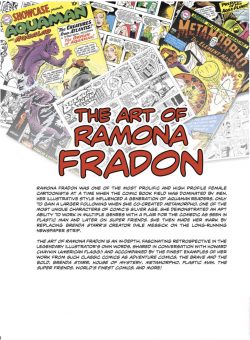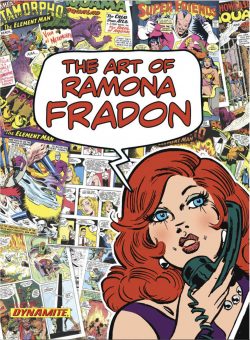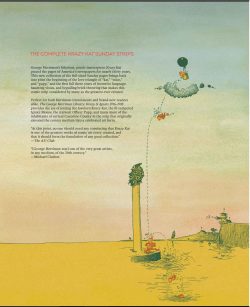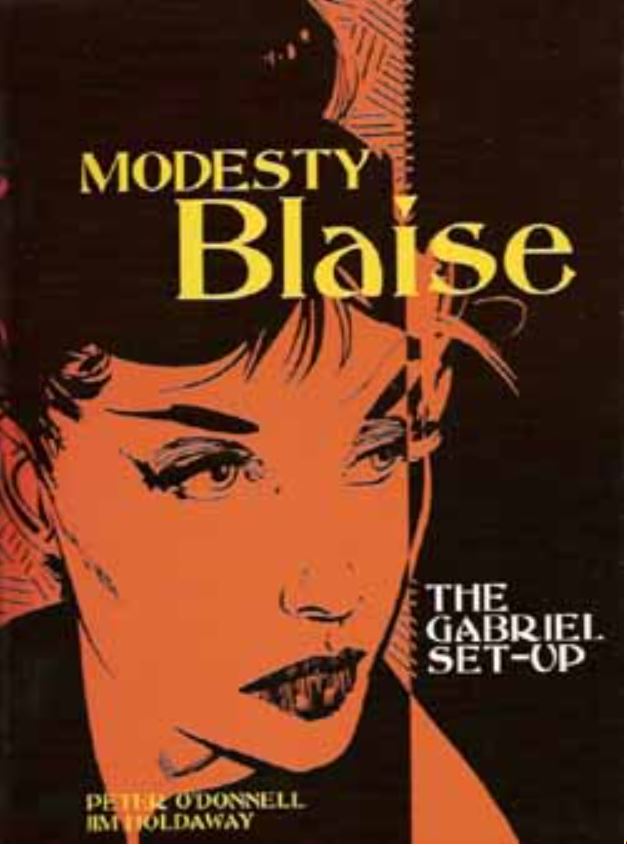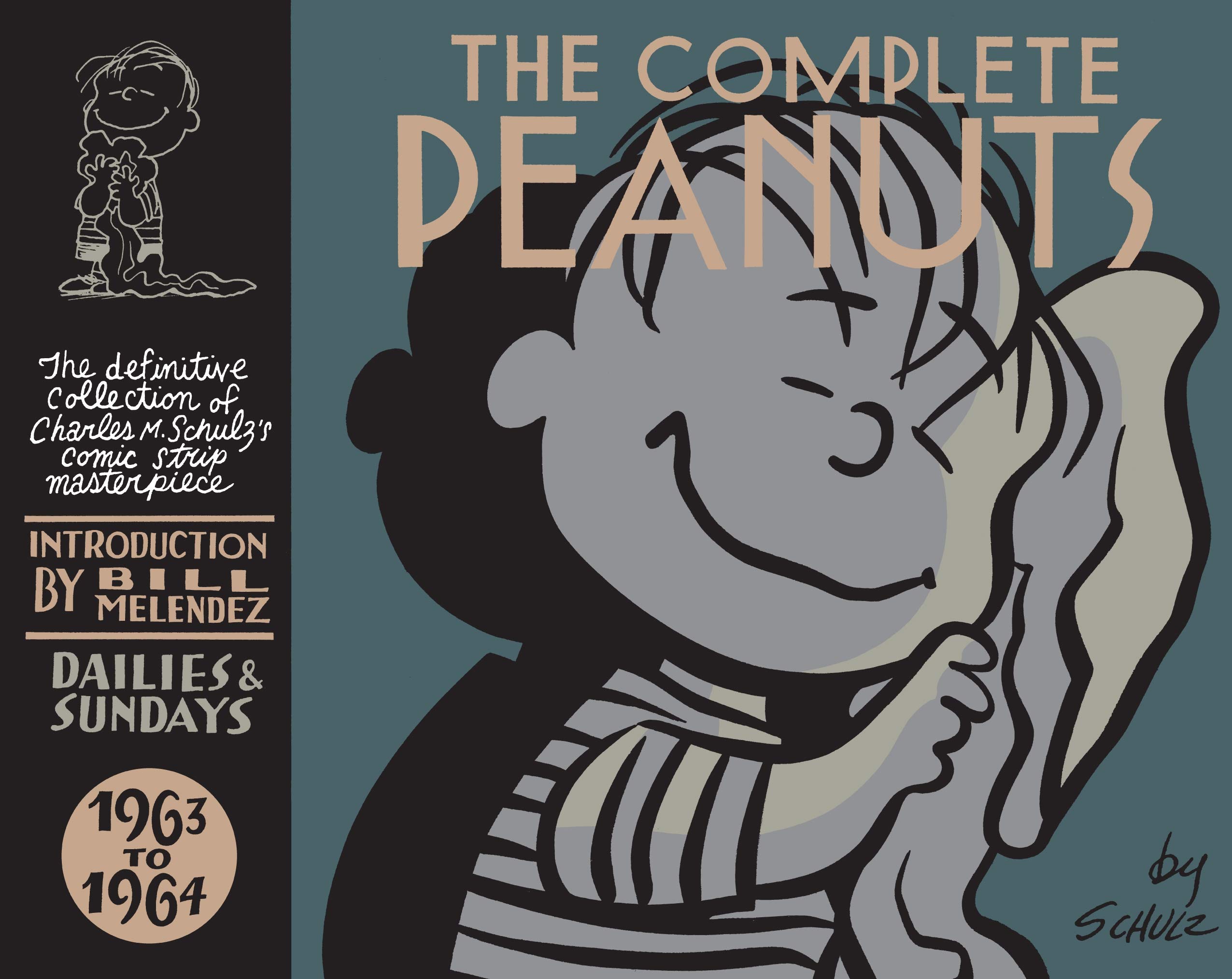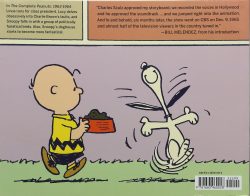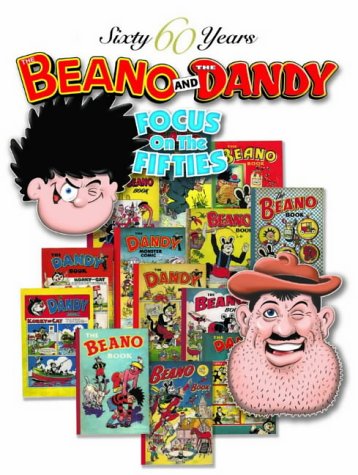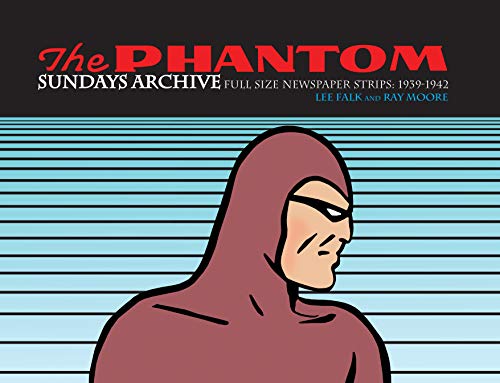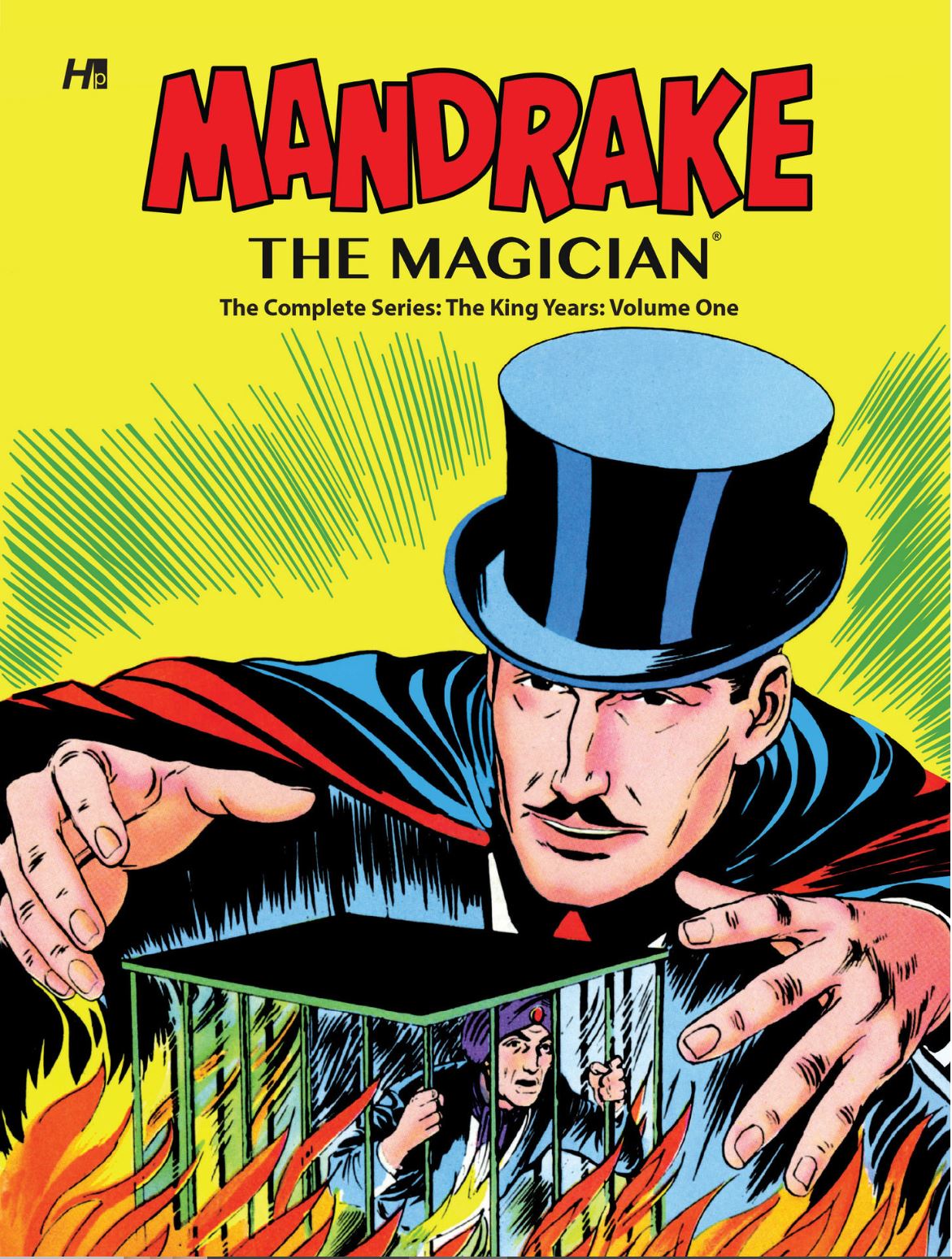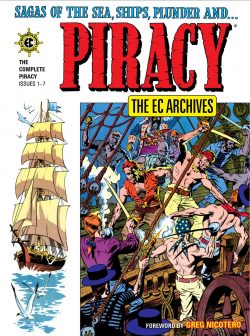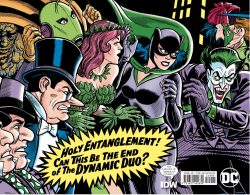
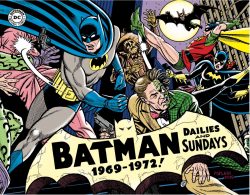
By Whitney Ellsworth, E. Nelson Bridwell, Al Plastino, Nick Cardy & various (IDW)
ISBN: 987-1-63140-263-0 (HB)
Win’s Christmas Gift Recommendation: Nuggets of Nostalgia to Delight All Ages… 8/10
For nearly eight decades in America newspaper comic strips were the Holy Grail cartoonists and graphic-narrative storytellers hungered for. Syndicated across the country and often the planet, winning millions of readers and accepted (in most places) as a more mature and sophisticated form of literature than comic books, it also paid better, with the greatest rewards and accolades being reserved for the full-colour Sunday page.
So it was always something of a poisoned chalice when a comic book character became so popular that it swam against the tide (after all, weren’t funny-books invented just to reprint strips in cheap, accessible form?) and became a syndicated serial. Superman, Wonder Woman, Blue Beetle and Archie Andrews made the jump soon after their debuts and many features have done so since.
Due to war-time complications, the first Batman and Robin newspaper strip was a late entry, but when the Dynamic Duo finally hit the Funny Pages, the feature proved to be one of the best-regarded, highest quality examples of the trend, both in Daily and Sunday formats.
Somehow, it never achieved the circulation it deserved, but at least the Sundays were eventually given a new lease of life when DC began issuing complete vintage stories in the Batman 80-page Giants and Annuals in the 1960s. The exceedingly excellent all-purpose adventures were ideal short stories that added an extra cachet of exoticism for young readers already captivated by simply seeing tales of their heroes that were positively ancient and redolent of History with a capital “H”.
Such was not the case in the mid-1960s when, for a relatively brief moment, mankind went bananas for superheroes in general and most especially went “Bat-Mad”. The comic book Silver Age revolutionised a creatively moribund medium cosily snoozing in unchallenging complacency, bringing a modicum of sophistication to the revived genre of mystery men.
For quite some time the changes instigated by Julius Schwartz (in Showcase #4, October 1956) which rippled out in the last years of that decade to affect all of National/DC Comics’ superhero characters generally passed by Batman and Robin. Fans buying Detective Comics, Batman, World’s Finest Comics and latterly Justice League of America would read adventures that – in look and tone – were largely unchanged from the safely anodyne fantasies that had turned the Dark Knight into a mystery-solving, alien-fighting costumed Boy Scout just as the 1940s turned into the 1950s.
By the end of 1963, however, Schwartz having – either personally or by example – revived and revitalised the majority of DC’s line (and, by extension and imitation, the entire industry) with his reinvention of the Superhero, was asked to work his magic with the creatively stalled and near-cancellation Caped Crusaders.
Installing his usual team of top-notch creators, the Editor stripped down the accumulated luggage and rebooted the core-concept. Down – and usually out – went the outlandish villains, aliens and weird-transformation tales in favour of a coolly modern concentration on crime and detection. Even the art-style itself underwent a sleek streamlining and rationalisation. The most visible change for us kids was a yellow circle around the Bat-symbol but, far more importantly, the stories changed. A subtle aura of genuine menace crept back in.
At the same time, Hollywood was in production of a TV series based on Batman and, through the sheer karmic insanity that permeates the universe, the studio executives had based their interpretation not upon the “New Look Batman” currently enthralling readers, but the wacky, addictively daft material DC was emphatically turning its editorial back on.
The Batman show premiered on January 12th 1966 and ran for three seasons of 120 episodes: airing twice weekly for the first two. It was a monumental, world-wide hit that sparked a vast wave of trendy imitation. Resultant media hysteria and fan frenzy generated an insane amount of Bat-awareness, no end of spin-offs and merchandise – including a cinema movie – and introduced us all to the phenomenon of overkill.
No matter how much we comics fans might squeal and froth about it, to a huge portion of this planet’s population Batman is always going to be that “Zap! Biff! Pow!” buffoonish costumed Boy Scout…
“Batmania” exploded across Earth and then as almost as quickly became toxic and vanished, but at its height led to the creation of a fresh newspaper strip incarnation. That strip was a huge syndication success and even reached fuddy-duddy Britain, not in our papers and journals but as cover feature of weekly comic Smash! (from issue #20 onwards).
The TV show ended in March 1968. As the series foundered and faded away, global fascination with “camp” superheroes – and no, the term had nothing to do with sexual stereotyping no matter what you and Mel Brooks might think – burst as quickly as it had boomed and the Caped Crusader was left with a hard core of dedicated fans and followers who now wanted their hero back…
That ennui also finally finished the Syndicated comic strip (at least until the 1989 Batman movie), but as this final compilation proves, by the end it was – if not a failed kidnap recovery – a mercy killing…
This third hardback compilation gathers the last hurrahs of the strip, from the time when the Gotham Guardians were being pushed out of their own series and highlights a time when contracts and copyrights proved far more potent than Truth, Justice and the American Way…
As well as re-presenting the last bright and breezy, sometimes zany cartoon classics of Batman with Robin the Boy Wonder, this tome is augmented by a wealth of background material, topped up with oodles of unseen scenes and background detail to delight the most ardent Baby-boomer nostalgia-freak as well as captivating contemporary examples of the massed merchandise the TV series and comic strip spawned – such as adhesive Adventures Stickers, and house ads from Smash!…
The fun-fest opens with more informative and picture-packed, candidly cool revelations from comics historian Joe Desris in ‘A History of the Batman and Robin Newspaper Strip: Part 3’; sharing the communications between principal players and discussing how E. Nelson Bridwell became editor and then scripter on the rapidly evolving feature.
In January 1972, growing disputes between NPP (National Periodical Publications: DC’s parent company) and the Ledger Syndicate led to the latter attempting to exclude the former from the deal. When NPP withheld the strips it was contracted to produce, LS brought in an uncredited replacement creative team and published unsanctioned “bootleg” material that infringed DC’s copyright, beginning with the January 3rd episode. By the 31st, LS was completely rogue and as well as a generating a huge drop in both story and art quality, the replacements actively worked to undo all of Bridwell’s efforts to crosspollinate the strip and comic book continuities. On April 8th the syndicate dropped DC’s copyright from the strips prior to introducing their own hero – Galexo – to the feature on April 11th.
Although Bruce Wayne and Dick Grayson still occasionally appeared and the title masthead stubbornly remained attention-grabbing “Batman”, the newcomer and his sidekicks Solaria and Paul were now the panel-hogging stars.
Eventually, NPP secured their intellectual property and walked away, and the strip staggered to a natural demise without DC heroes. Full details are provided by Desris in his introduction, which also shares its ultimate fate and where the feature continued until it ended…
The Introduction also offers a wonderful taste of what might have been via the unpublished episodes by Bridwell, Al Plastino & Nick Cardy that should have run from January 3rd – 15th 1972, to counterbalance the actual published material seen at the end of the volume…
Chronologically incorporating monochrome 2-4 panel dailies and full-page full colour Sundays, the series was originally scripted by former DC editor (and the company’s Hollywood liaison) Whitney Ellsworth, who’s still in charge as we recommence with a saga that began in the previous volume, drawn as ever by Plastino.
Alfred John “Al” Plastino was a prodigious artist with a stellar career. He had been active in early comic books, with credits including Captain America and Dynamic Man before serving in the US Army. His design talents were quickly recognised and he was seconded to Grumman Aerospace, The National Inventors Council and latterly The Pentagon, where he designed war posters and field manuals for the Adjutant General’s office.
In 1948, he joined DC and soon became one of Superman’s key artists. He drew many landmark stories and, with writer Otto Binder, co-created Brainiac, The Legion of Super-Heroes and Supergirl. From 1960-1969 Plastino ghosted the syndicated Superman newspaper strip and whilst still drawing Batman, also took over Ferd’nand in 1970: drawing it until his retirement in 1989.
He was extremely versatile and seemingly tireless: in 1982-1983 he drew Nancy Sundays after creator Ernie Bushmiller passed away and was controversially hired by United Media to produce fill-in episodes of Peanuts when Charles Schulz was in dispute with the company. Al Plastino died in 2013.
The new policy of guest stars from DC’s comics pantheon made Plastino the ideal choice as the strip transitioned to a tone of straight dramatic adventure and away from the campy comedy shenanigans of the TV show…
The first week of ‘My Campaign to Ruin Bruce Wayne’ (May 31st December 25th 1969) saw spoiled snob heiress Paula Vanderbroke and her brother Paul move into Wayne Manor and announce her intention of marrying Bruce. Here, when he tells her no, Paula – despite being bankrupt – dedicates all her remaining resources to crushing him and making him sorry.
Before she’s stopped, Wayne’s latest enterprise is sunk and the entire city suffers for her wounded pride and the Caped Crusader has succumbed to life-changing injuries…
Guest starring Superman, ‘Batman’s Back Is Broken!’ (December 26th 1969 to March 19th 1970) sees the Gotham Guardian laid low with the only surgeon who could fix him stuck in Mexico and unable to fly. That hurdle – amongst many others – is surmounted by the Man of Tomorrow who the steps in to impersonate Batman while he recuperates. Part of that program involves visiting a travelling show, sparking bad memories for Robin in ‘The Circus is Still Not For Sale!’ (March 20th – September 7th) as his senior partner retrains with the Fiore Family Circus. Almost immediately, a series of accidents imperil one and all, and physical therapy must give way to investigation and deduction. What that turns up is Mafia involvement…
When Wayne moves to end the threat by purchasing the show, a hidden mastermind makes a bold move by hiring a hitman to “cancel” him, but does not realise who he’s dealing with…
Bridwell began being credited as writer with the July 22nd instalment and immediately began dialling back the humorous tone in favour of darker drama, bringing the serial to a swift conclusion. With skulduggery exposed and thwarted the writer then began a bold move…
As DC’s continuity master, Bridwell began mirroring the dynamic changes punctuating a new age of relevancy in the company’s comic books, and adapted the big break-up between Batman and Robin as Dick Grayson went off to college.
‘Everything Will Be Different’ (September 8th 1970 – January 8th 1971) saw Wayne become a social activist, using his wealth to create the “Victim’s Incorporated Program” to help those who had suffered through crime. Shutting down the Batcave and Manor to work and live in the heart of Gotham City, Wayne and Alfred retooled to help the innocent as well as punish the guilty. The first survivor of crime was recent widow Mrs Whipp whose son Jeff had run away after his father was killed. She thought he might have gone to Star City to enlist the aid of Green Arrow…
Meanwhile, Dick had settled in at nearby Hudson University, meeting scientist Dr Kirk Langstrom even as Batman joined his JLA comrade there. All three heroes’ paths converged when student radicals sought to kill the runaway in their murderous efforts to create chaos and bring down “the Establishment”.
Bridwell also began overlapping storylines and before Jeff could be saved, ‘I am… Man-Bat!’ (January 8th – 14th April 1971) saw Langstrom’s experiments mutate scholar into monster, with his frantic attempts to find a cure contributing to the plot’s failure and heroes’ triumph…
Trapped in freak form, Man-Bat stows away with Batman and Jeff, and stalks Gotham in ‘Too Many Riddles – Two Many Villains’ (15th April-October 5th 1971): inadvertently stopping The Penguin killing Batman before enlisting the Dark Knight’s aid in saving himself before further mutating and flying off in panic just as Robin meets Langstrom’s fiancée Francine Lee at Hudson U.
As they all converge on Gotham, the Bird Bandit rejoins Catwoman, Riddler and The Joker who ally with another old Bat-foe for a major coup…
Despondent Francine has found Kirk and is pondering a horrific life change, whilst an army of former Bat-foes assaults Gotham, seeking to restage the Mad Hatter’s Tea Party for profit. The sinister soiree has attracted Tweedledee and Tweedledum, The Scarecrow, Poison Ivy, Killer Moth and Two-Face, but also called Batgirl out of retirement …
With Nick Cardy adding powerful moody tones to the mix, the drama built to a potent crescendo as a massive heroin deal was exposed as prompting the evil army’s antics, but in the end the assembled Bat Squad proved sufficient to the task…
The slow-boiling Man-Bat plot then overheated in ‘Hideous Newlyweds’ (October 6th – November 4th 1971) as the heroes learned of Francine’s fate after she had willing become a monster like Kirk, and the era technically ended with ‘The Secrets in Grandma Chilton’s Scrapbook’ (November 5th 1971 – January 28th 1972). Extrapolated from a character from comics, the tale revealed how a young thug inherits Chilton’s worldly goods and sees in her scrapbook that she was the mother of the man who murdered Thomas and Martha Wayne… and turned their son Bruce into Batman…
As the housekeeper of his Uncle Philip Wayne, she had reared the orphan in his formative years and deduced his secret. Now, with her death, the son of “Joe Chill” learned how his own father died because of the Dark Knight and the cycle of vengeance begins again as the young man – armed with deadly knowledge – targets Wayne and everything he loves…
We’ll never know how that so-promising, tension-drenched drama should have concluded, as pinch hitters parachuted in during the aforementioned dispute wrap up the tale on autopilot and plunge straight into feeble fable ‘Dick Grayson: Kidnapped!’ (January 29th-March 7th).
When Wayne’s ward is snatched from college the distressed hero calls in Batgirl and Superman – but only in their plainclothes personas of Babs Gordon and Clark Kent -gratuitously along to pad out the done-by-numbers rescue…
The teen has no luck but bad and ‘Dick Grayson: Skyjacked!’ (March 8th – April 3rd 1972) then sees his passenger flight home seized by a terrorist, before the kid steps in to save himself this time…
The end comes none too soon in ‘The Duo Becomes a Trio’ (April 4th – 1972 and beyond) with Bruce and Dick recruiting mystery champion Galexo to help them put the team on a global footing. The World’s Worst dressed telepath has his own team but will join for now, beginning with the mastermind igniting volcanoes in Antarctica…
The book stops here but the strip apparently continued awhile longer in overseas papers – represented here in another 17 full pages of Batman with Robin and Galexo from Australian and Singapore papers. I found them utterly unreadable but maybe you’re tough enough to handle it…
The majority of stories in this compendium reveal how gentler, stranger times and an editorial policy focusing as much on broad humour as Batman’s reputation as a crime-fighter was swiftly turned to all-out action adventure once Batmania gave way to global overload and ennui. That was bad for the strip at the time but happily resulted in some truly wonderful adventures for die-hard fans of the comic book Caped Crusader. If you’re of a certain age or open to timeless thrills, spills and chills this a truly stunning collection well worth your attention.
Batman: Silver Age Dailies and Sundays 1969-1972! concludes huge (305 x 236 mm) lavish, high-end hardback collections starring the Caped Crusaders, and is a glorious addition to the superb commemorative series of Library of American Comics which has preserved and re-presented in luxurious splendour such landmark strips as Li’l Abner, Tarzan, Little Orphan Annie, Terry and the Pirates, Bringing Up Father, Rip Kirby, Polly and her Pals and so many other cartoon icons.
If you love the era, the medium or just graphic narratives, these stories are great comics reading, and this is a book you simply must have.
© 2016 DC Comics. All rights reserved. Batman and all related characters and elements ™ DC Comics
